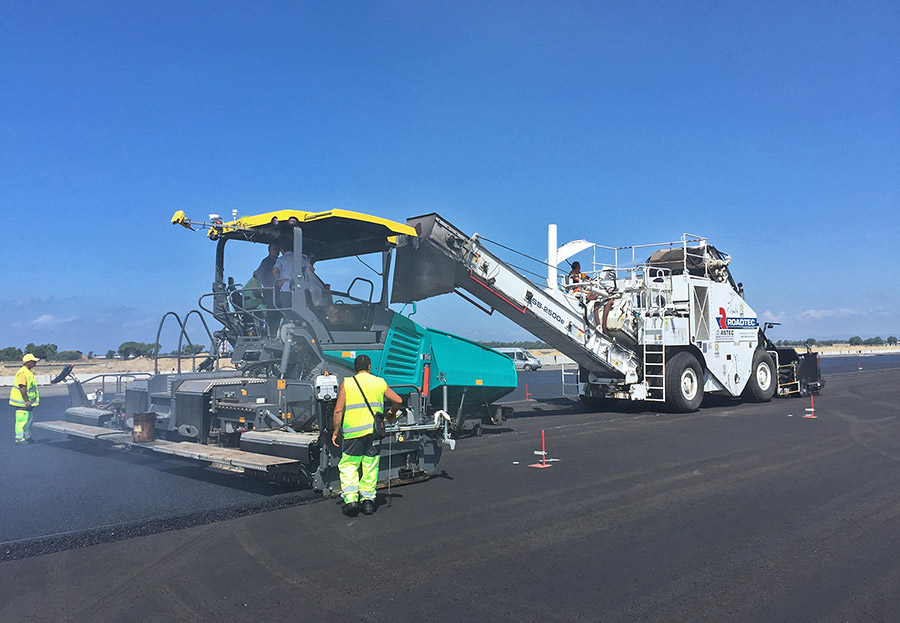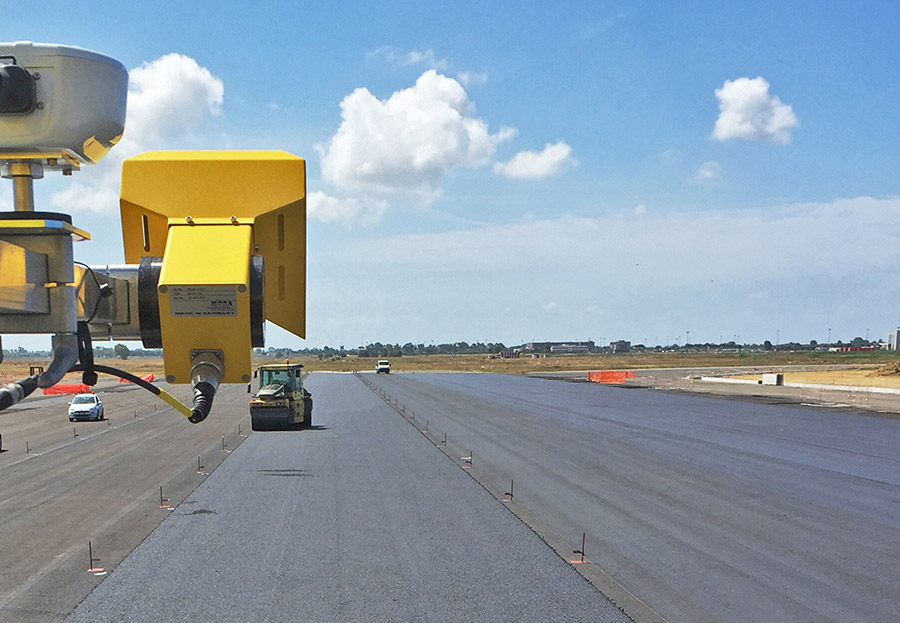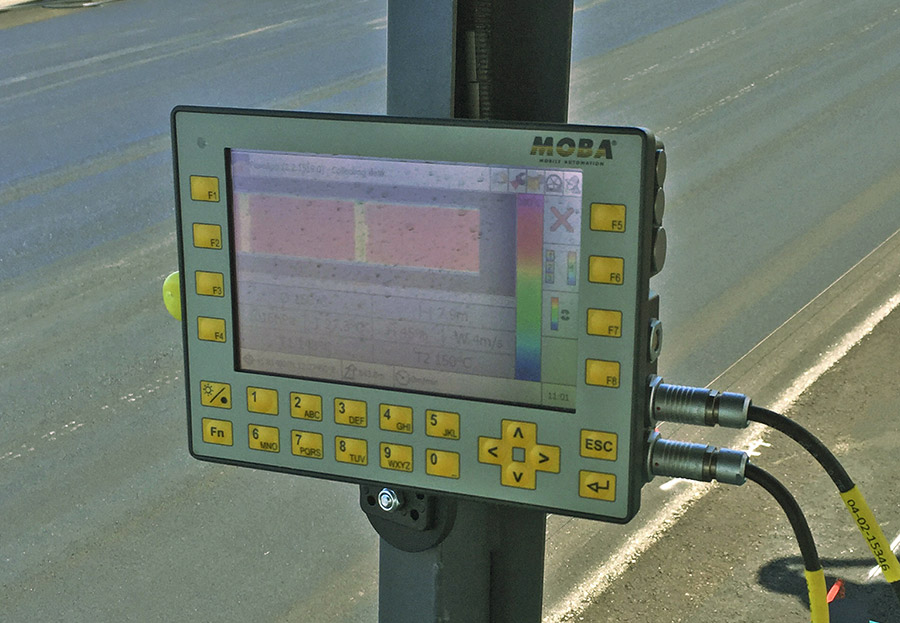This meant a huge organisational effort on the part of the airport to reallocate and coordinate flights appropriately during the reconstruction work. For this reason, the rehabilitation work must to be done with speed, precision and great efficiency, leaving no room for any delays. In addition to this, the asphalt must satisfy the most exacting requirements to prevent premature wear and tear or damage to the runways. For this reason, the construction company responsible for laying the asphalt, Pavimental, deployed a Roadtec SB-2500 material transfer vehicle and a MOBA PAVE-IR Scan system along with the paver they chose for the job in order to achieve the highest possible surfacing quality and at the same time to be in a position to document the fact that the material had been laid uniformly and according to the customer requirements. Because, aside from the quality of the mixture itself, its temperature during laying is one of the most decisive factors in producing the best possible quality for the asphalted surface. Laying thermally re-separated materials, for example, can lead to premature damage to the asphalt surface. On the other hand, laying materials at too low temperature can also have negative consequences, since the best possible compaction can only be achieved within a particular temperature window. Using the PAVE-IR Scan quality control system the resurfacing team can measure, display and plot the asphalt temperature throughout the project and over the entire width of the paving surface. For this purpose, an infrared scanner is mounted over the screed to measure the temperature directly during laying work, while a GNSS antenna plots the machine's position. In addition to this, a weather station monitors relevant additional local conditions, such as air temperature and wind speed. All data are then displayed on an on-board computer, so that appropriate adjustments can be made to the relevant parameters. All data recorded is saved for documentation purposes and can be assessed later back at the office. This facility meant that the construction company chosen to rehabilitate the runway could prove to the customer that the surfacing material was laid uniformly.



